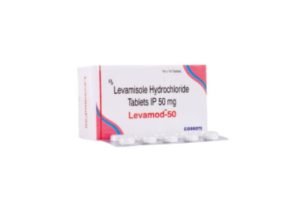
Dicloxacillin is a penicillinase-resistant penicillin antibiotic used primarily to treat infections caused by Gram-positive bacteria, including those that produce beta-lactamase enzymes that can inactivate other penicillins.
Description:
Dicloxacillin is a beta-lactam antibiotic that resists breakdown by beta-lactamase enzymes. It is particularly effective against Staphylococcus aureus and other Gram-positive bacteria that produce these enzymes.
Brand Names:
- Dycill
- Pathocil
- Diclocil
Available Forms & Strengths:
- Oral Tablets/Capsules:
- Dicloxacillin: Typically available in 250 mg and 500 mg capsules.
- Oral Suspension:
- Dicloxacillin: Often available in a liquid form for pediatric use, typically with concentrations such as 125 mg/5 mL.
Uses:
Dicloxacillin is used to treat a variety of infections, including:
- Skin and Soft Tissue Infections: Such as cellulitis, impetigo, and abscesses.
- Bone and Joint Infections: Including osteomyelitis.
- Respiratory Tract Infections: Such as pneumonia and bronchitis, particularly when caused by penicillinase-producing Staphylococcus aureus.
- Endocarditis: Caused by susceptible strains of Staphylococcus aureus.
Side Effects:
- Common:
- Gastrointestinal: Nausea, vomiting, diarrhea.
- Allergic Reactions: Rash, itching, urticaria.
- Less Common:
- Hematologic: Leukopenia, thrombocytopenia, or anemia.
- Renal: Risk of nephrotoxicity, particularly with high doses or pre-existing renal conditions.
- Hepatic: Elevated liver enzymes or liver dysfunction.
- Superinfections: Risk of overgrowth of non-susceptible organisms like Clostridium difficile.
Dose:
- Adults:
- Oral: Typically 250 mg to 500 mg every 6 hours, depending on the severity of the infection.
- Children:
- Oral: Dosing is typically 25-50 mg/kg/day divided into 3-4 doses, depending on the severity and type of infection.
Contraindications:
- Hypersensitivity: Known allergy to Dicloxacillin, other penicillins, or beta-lactam antibiotics.
- Renal Impairment: Use with caution in patients with significant renal dysfunction due to potential risk of drug accumulation.
Drug Interactions:
- Anticoagulants: Dicloxacillin may enhance the effects of anticoagulants like warfarin.
- Other Antibiotics: May interact with other antibiotics, potentially affecting efficacy or side effects.
- Methotrexate: Dicloxacillin may affect renal clearance of methotrexate, increasing the risk of methotrexate toxicity.
Warnings:
- Allergic Reactions: Serious reactions, including anaphylaxis, can occur. Discontinue immediately if severe allergic symptoms develop.
- Renal Monitoring: Regular monitoring of renal function is advised, especially in patients with pre-existing kidney issues.
- Superinfection Risk: Prolonged use can lead to overgrowth of resistant organisms or fungi.
Special Considerations:
- Pregnancy: Classified as Category B. Generally considered safe during pregnancy, but should be used when clearly needed.
- Breastfeeding: Dicloxacillin is excreted in breast milk in small amounts. It is usually considered safe for use during breastfeeding, but monitoring for any adverse effects in the infant is recommended.
- Pediatric Use: Dicloxacillin is used in children, with dosing adjusted based on weight and the severity of the infection.
Doctor Advised:
- Complete the full course of therapy as prescribed to ensure effectiveness and reduce the risk of resistance.
- Inform your healthcare provider of any history of allergic reactions to penicillins or other beta-lactam antibiotics.
- Monitor for side effects, such as gastrointestinal issues or signs of an allergic reaction, and seek medical advice if necessary.
Conclusion:
Dicloxacillin is a beta-lactamase-resistant penicillin effective against many Gram-positive infections, including those caused by penicillinase-producing Staphylococcus aureus. It should be used according to medical advice to manage infections effectively and to prevent resistance and side effects.







